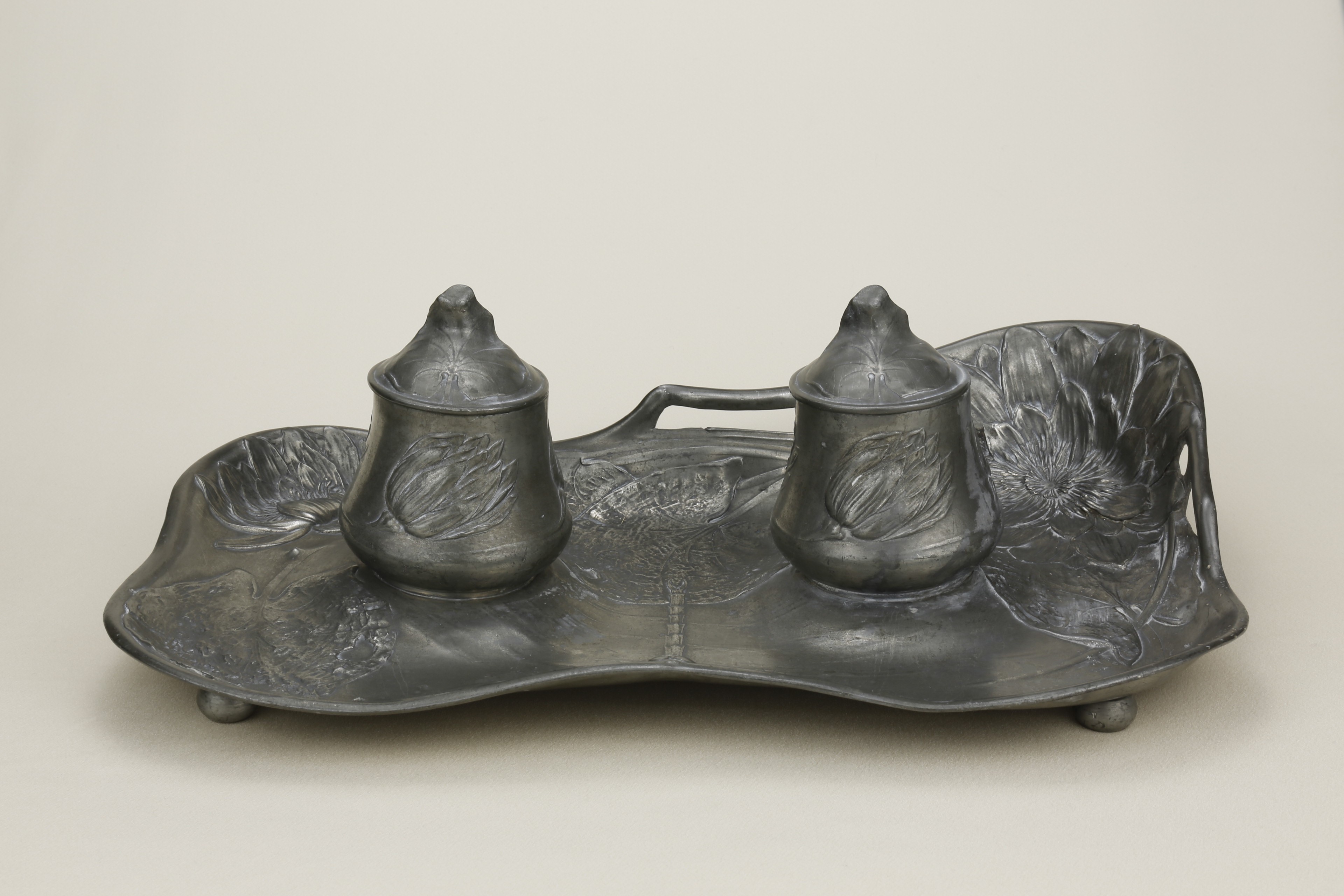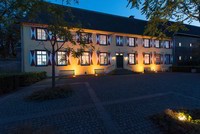Federschale mit zwei Tintenfässern. Rand unregelmäßig hochgezogen. In den geschweiften Ecken Seerosenblüten und -blätter. Über der Querachse des Spiegels eine Libelle.
Warenzeichen, oval: KAYSERZINN 4256
Stempel: 1
en

Federschale mit zwei Tintenfässern. Rand unregelmäßig hochgezogen. In den geschweiften Ecken Seerosenblüten und -blätter. Über der Querachse des Spiegels eine Libelle.
Warenzeichen, oval: KAYSERZINN 4256
Stempel: 1
Zinn
18 x 21 x 34 cm
Zons gilt heute als besterhaltene spätmittelalterliche Befestigung am Niederrhein. Inmitten des historischen Juwels befindet sich eine ehemalige Burg...
Contact the institution[Last update: ]
